Aravaipa Canyon
June 11-12, 2005
With two pistol-toting nutcases blocking the eastern access, it's been tough to get permits for Aravaipa Canyon, a wilderness area limited to 50 visitors per day.

When David and Dennis and I started checking the BLM web site in March, the first available weekend was June 12-13, smack in the hottest part of the summer and perilously close to monsoon season. But the chosen weekend arrived with temperatures only in the mid-90s and no chance of rain.
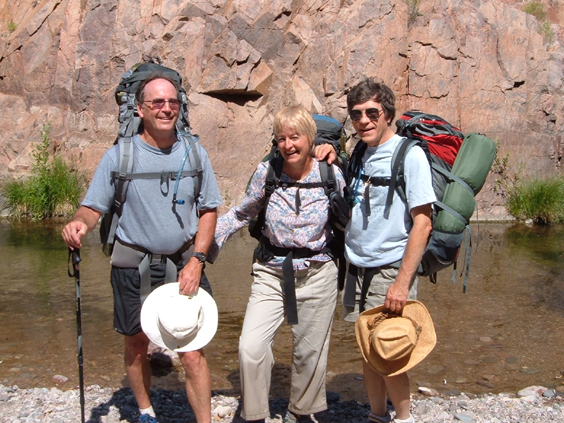
We met David at the trailhead at 8:00 and were quickly joined several other groups of hikers who seemed to be on the same schedule.
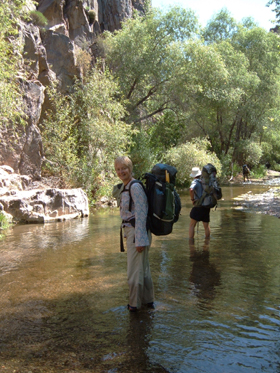
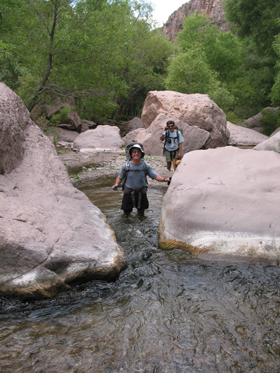
A good 20 years younger than us, they quickly disappeared down the trail while the three of us sloshed along in ankle deep water.
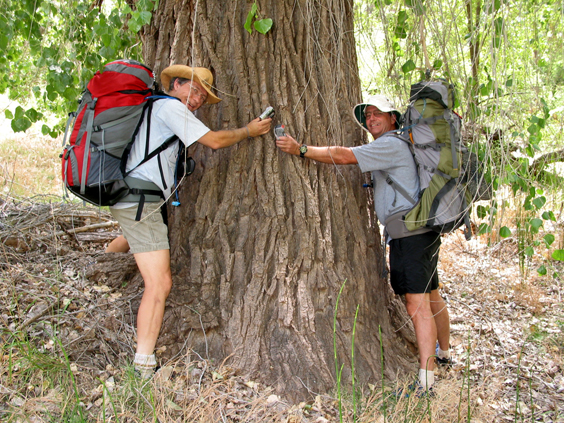
For the first mile-and-a-half, the canyon is broad and the stream meanders lazily under a dense canopy of cottonwood and sycamore trees.
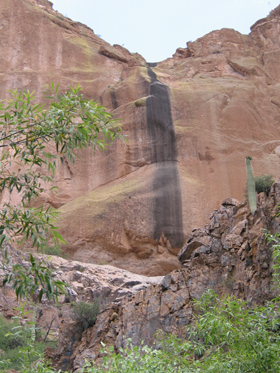
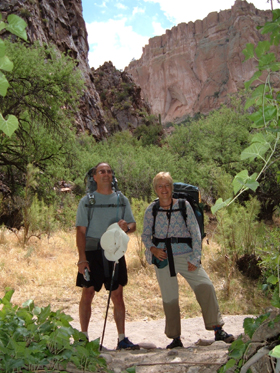
Gradually the canyon narrows and cliffs of yellow tuff zoom up to dizzying heights.
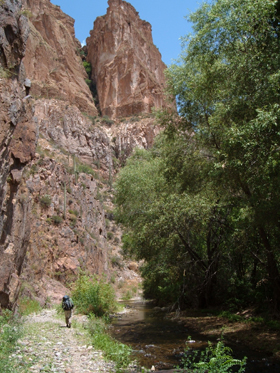
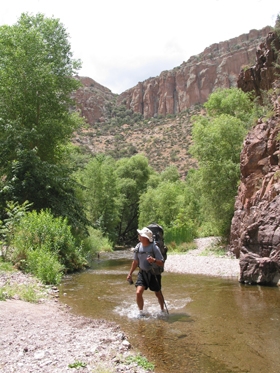
This area fairly vibrates with avian activity, and we saw numerous goldfinches, dippers and western tanagers. And for a good quarter mile, we followed a Great Blue Heron who kindly tolerated several photos.
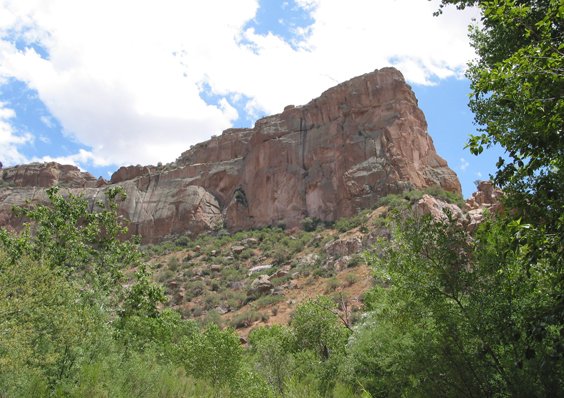
The creek sculpts numerous blue-green pools as it twists and turns through encounters with nine side canyons.
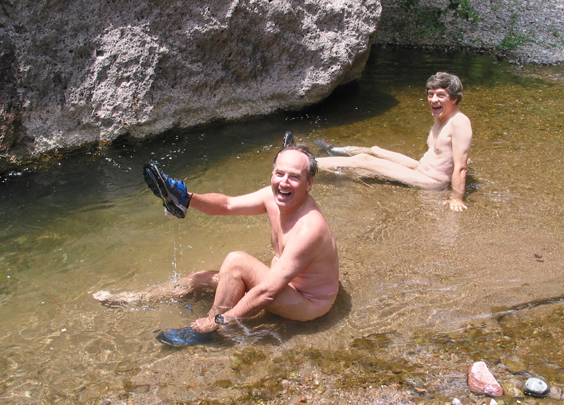
We chose one such pool for our lunch break, but we had to share with a school of good-sized suckers.
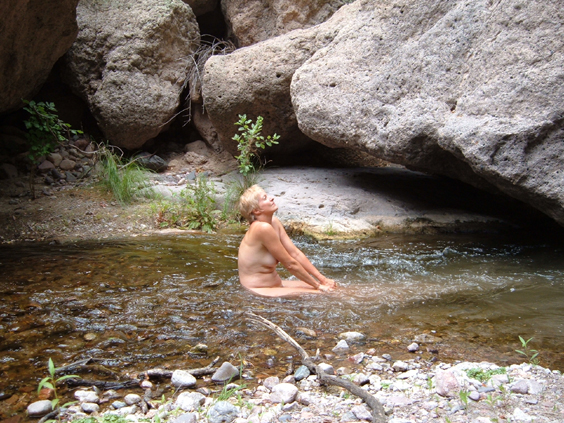
There are numerous campsites in the vicinity of Vargas and Horse Canyon. The other hikers all set up camp in this area, but we pressed on, anxious to see as much of the canyon as possible before dark.
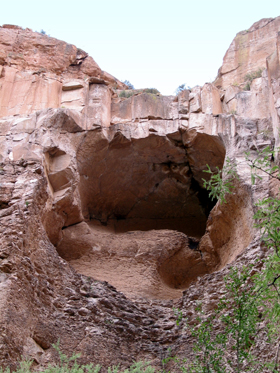
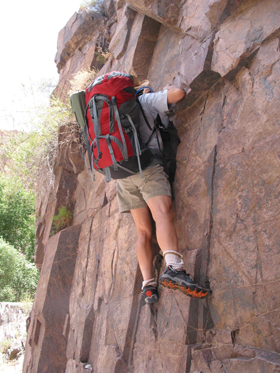
Past Horse Canyon, the canyon flattens out again and the deep pools disappear. The cliffs are pocked with numerous caves, and we couldn't resist clawing our way uphill to this particularly large aperture with a dark ceiling that suggested it may have been inhabited at one time. But at the mouth of the cave was a mountain of foul-smelling feces that sent me back down the hill in a hurry. Was it a bat cave? If so, where were the bats?
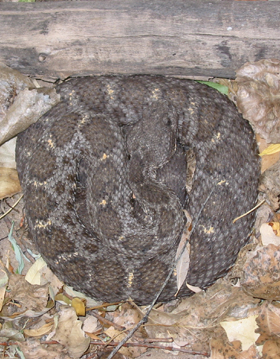
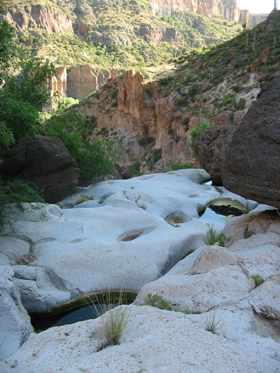
Booger Canyon
In the lowering light, we heard a big splash and then spotted an enormous Coatimundi trundling up the far bank. We also came across a comatose black rattler. We finally ran out of gas in a shady grove at the mouth of Booger Canyon. David explored the side canyon but found it blocked by house-sized boulders. Dennis' raspberry crumble birthday cake was more of a raspberry slurry, but it was tasty all the same, especially washed down with a good cup of Port.
We all slept somewhat fitfully in the heat, knowing that we were a good two miles past any other humans, in an area with ample evidence of bear and big cat activity. But there were no nocturnal visitors, and I rolled the boys out of their tents at 5:30 so we'd have plenty of time for dipping on the return hike.
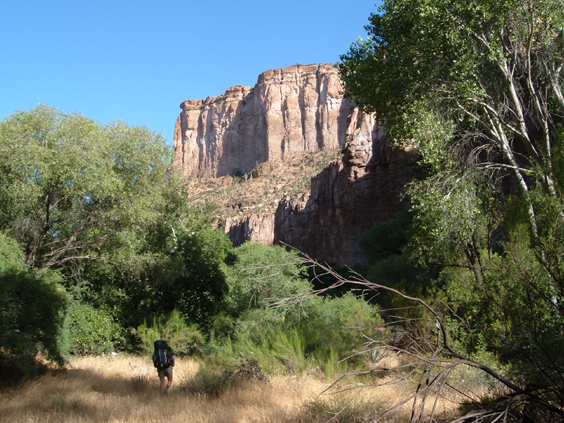
We made quick work of the first two miles by noting that although there are numerous crossings, there is a nearly continuous trail the length of the canyon. The trail is always on the bench side of the canyon, but is often farther inland than you might expect. And so we wandered in dawn's fresh light through tall yellow grass at the base of monstrous cliffs, setting lizards to leaping as we went.
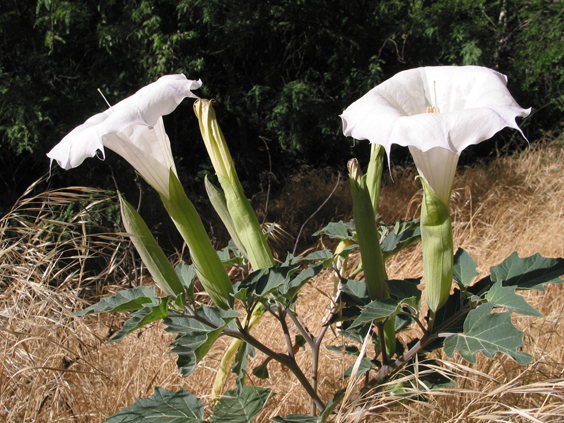
Suddenly we saw a splash of white beside the trail, too big to be a flower but too far from civilization to be a pillow case. On closer examination, it turned out to be a cluster of Jimson Weed (Datura stramonium) with hand-sized blossoms and serrated edges, just like in the Georgia O'Keeffe paintings.
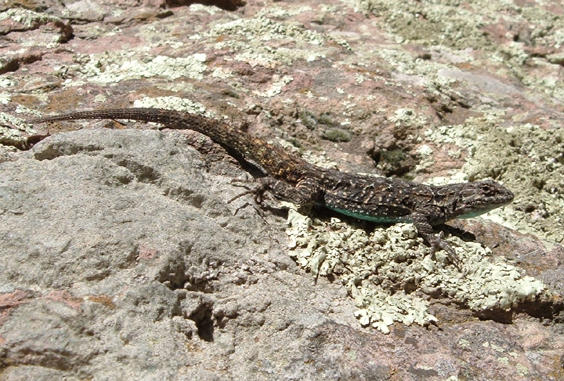
The canyon is incredibly rich in all manner of critters, including some familiar faces as well as many we'd never seen before.
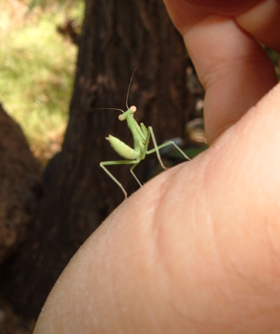
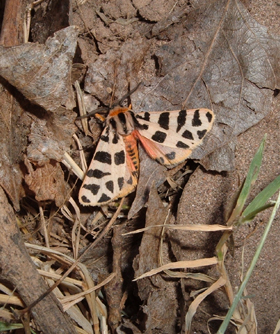
While searching for the men's room, we stumbled across the foundations of the original cabin at Horse Camp.
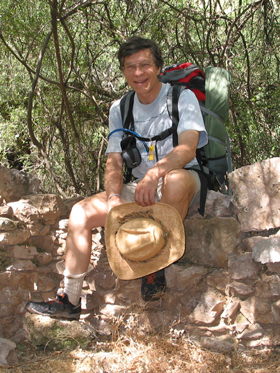
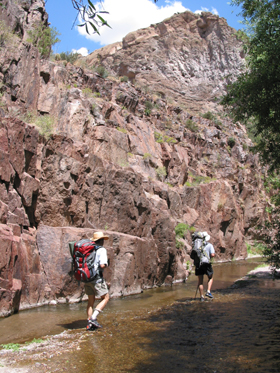
Sunday was warmer without a hint of clouds, but we knew we could return to the cool green shadows whenever we wanted.
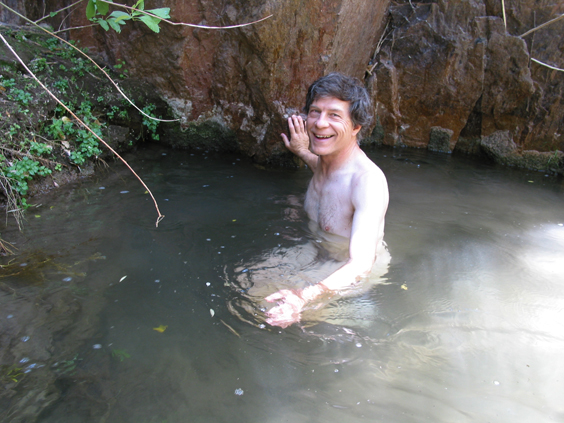
Dennis on his 57th birthday, in his birthday shoes and suit. We nearly achieved our goal of dipping in every pool!
